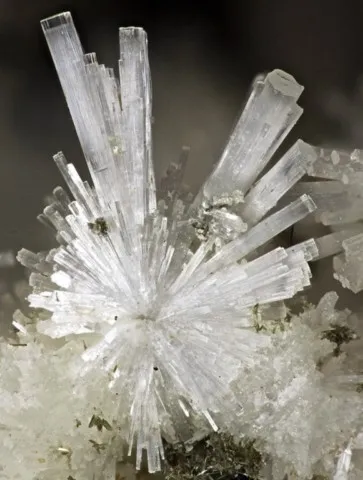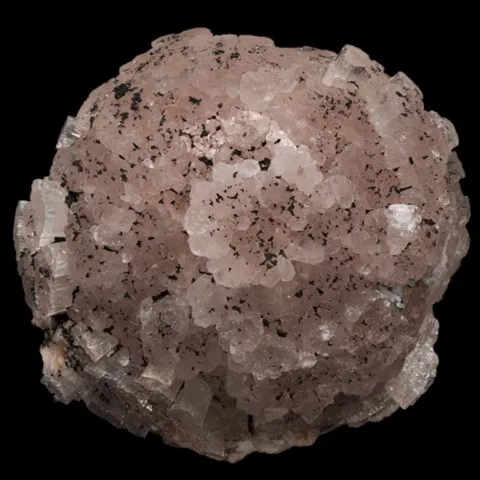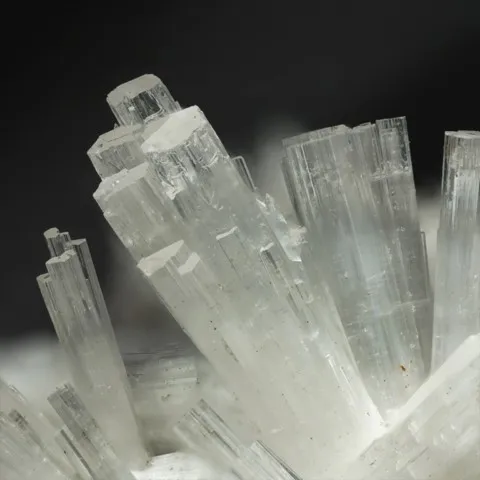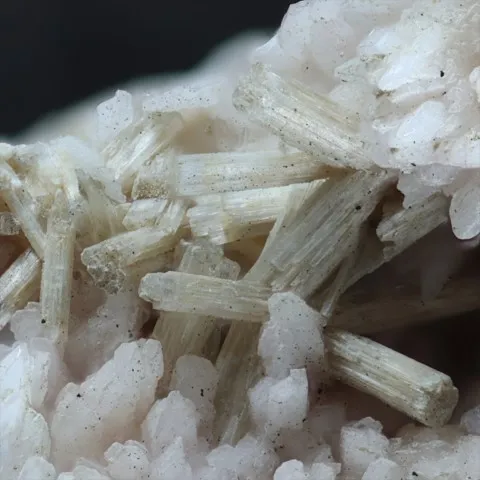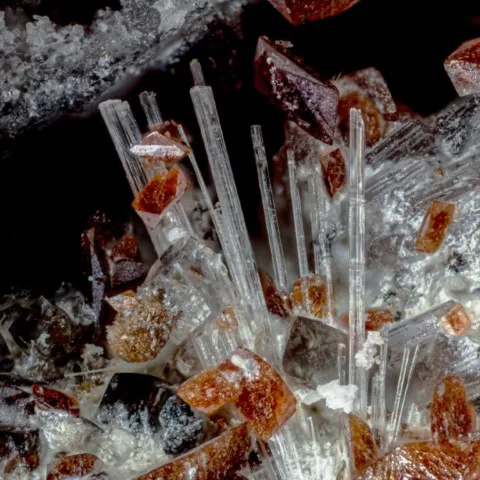LEIFITE
Class : Silicates
Subclass : Tectosilicates
Crystal system : Trigonal
Chemistry : Na2(Si,Al,Be)7(O,OH,F)14
Rarity : Very rare
Leifite is an extremely rare silicate of alkaline rock massifs and their pegmatites, known in only five deposits in the world. It was named in honor of the adventurer Leif Ericsson who discovered it in Greenland in 1982. Leifite forms strongly striated acicular crystals often grouped into spherical aggregates, colorless, white or slightly pink.
Main photo : Leifite de Poudrette quarry, Mont St-Hilaire, Quebec, Canada © Joachim Esche
Leifite in the World
Twinning
No twin known for this mineral species.
Fakes and treatments
No fakes recorded for this mineral species.
Hardness : 6
Density : 2.57
Fracture : Irregular
Streak : White
TP : Translucent to transparent
RI : 1.511 to 1.522
Birefringence : 0.011
Optical character : Uniaxial +
Pleochroism : None
Fluorescence : None
Solubility : -
Magnetism : NoneRadioactivity : None

